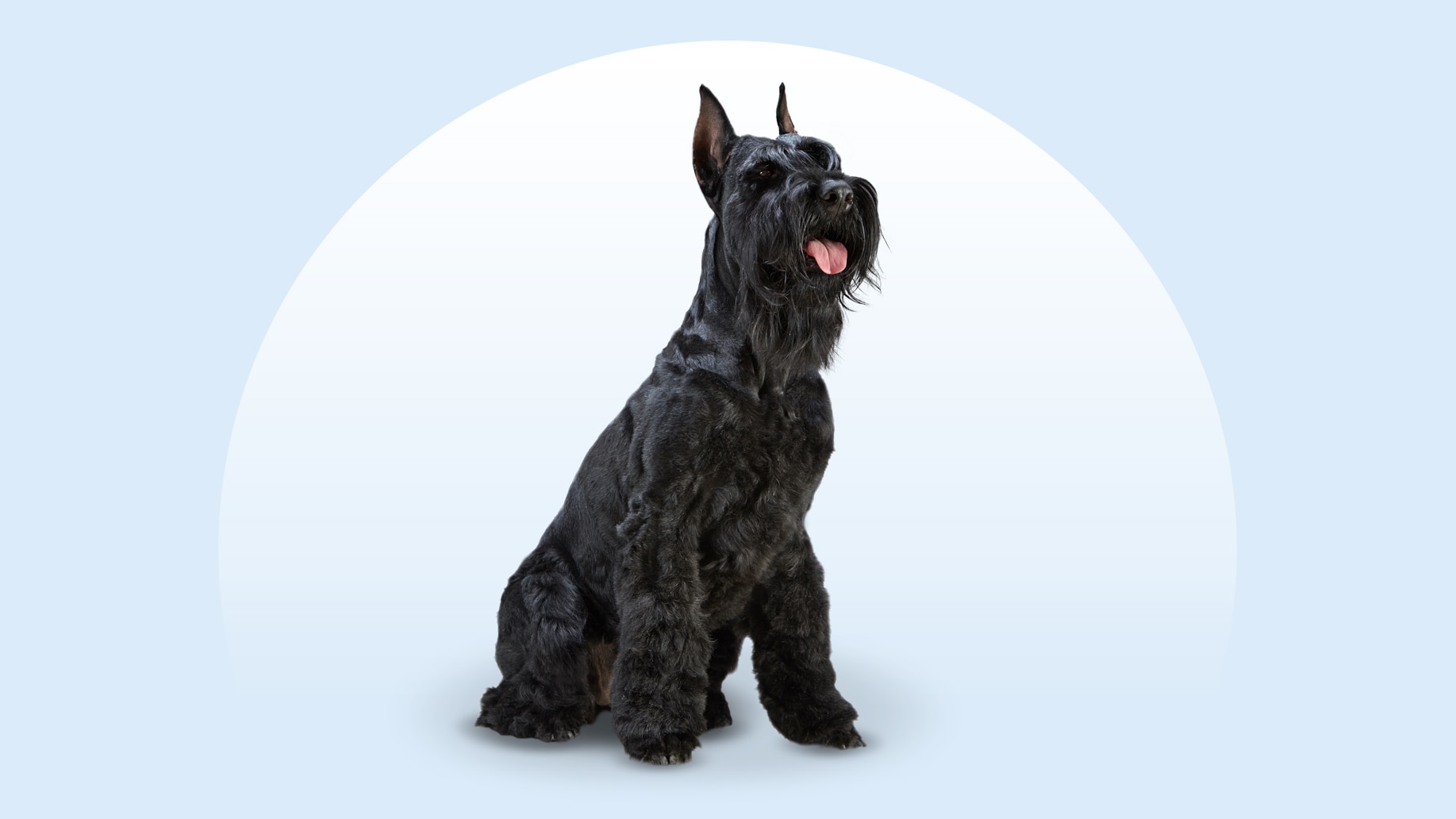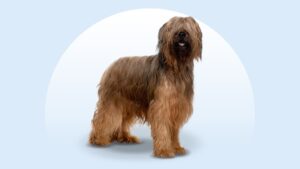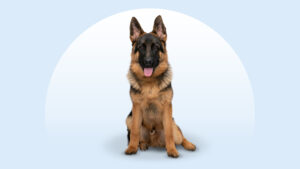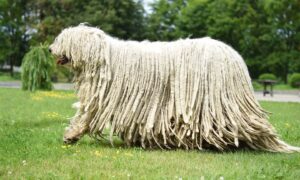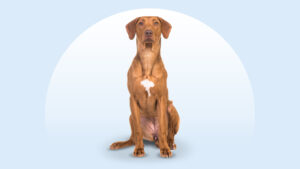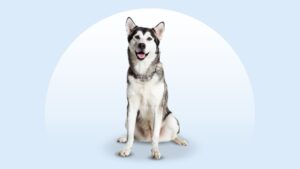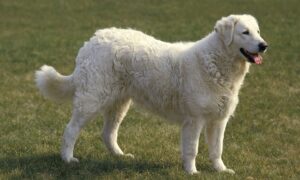Giant Schnauzer
Updated December 15, 2025
Giant Schnauzer
Updated December 15, 2025
Giant Schnauzers are large and high-energy dogs who do best with an experience and active pet parent by their side. As the largest of the three Schnauzer breeds, they need a lot of space to stretch their long legs—and a tall fence that can’t easily hop over.
Athletic, Loyal, Smart
55–85 pounds
23.5–27.5 inches
12–15 years
Black, Salt and Pepper
Big, beautiful Giant Schnauzers are scroll-stoppers of Instagram and the stroll-stoppers of your evening walk, thanks to their bushy eyebrows and hallmark beard.
But Giant Schnauzers aren’t just looks. Their smarts and cleverness make them fun to be around—especially when teaching them new tricks. Loyal and with stamina to spare, they are ideal companions for the “work hard, play hard” pet parent who leads an active life.
Giant Schnauzer Characteristics
Giant Schnauzer Appearance
The Giant Schnauzer size is the largest of three Schnauzer types (the other two are the Miniature Schnauzer and the Standard Schnauzer).
They have deep-set eyes that give them a wise, almost wizard-like look, and your Giant Schnauzer dog will sport a double coat—thick and wiry on the outside, soft and dense underneath—that’s typically a dashing black or salt and pepper.
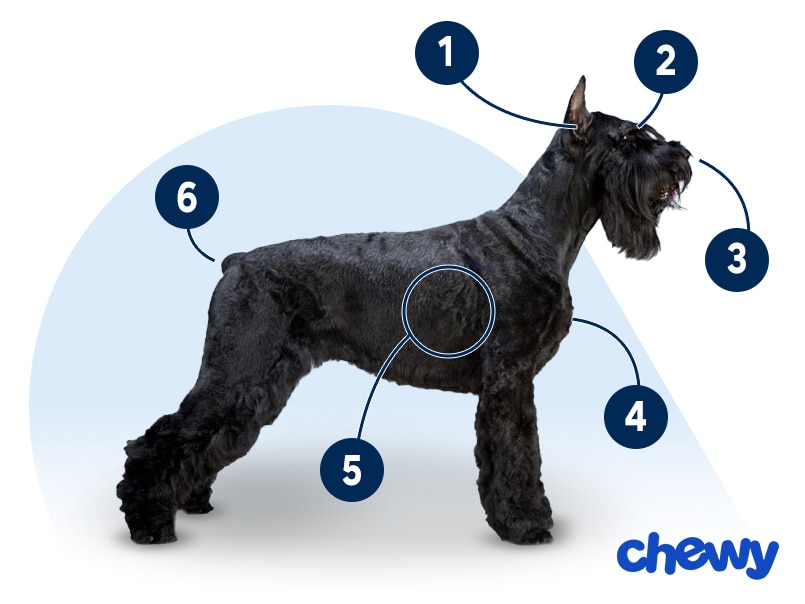
- Ears
Giant Schnauzers traditionally have cropped ears, but nowadays it’s common to see their ears left floppy and natural. Many groups, including the American Veterinary Medical Association, oppose ear cropping, and many countries and U.S. states have banned the practice.
- Eyes
A Giant Schnauzer’s deep-set eyes run from medium to dark brown.
- Nose
Giant Schnauzer dogs sport large black noses.
- Coat Length
Giant Schnauzers have a dense, thick, wiry outer coat and a soft undercoat.
- Coat Color
Giant Schnauzer colors are typically solid black or salt and pepper (gray).
- Tail
Like with ear-cropping, it was once common to dock a Giant Schnauzer tail, but this is another controversial procedure that many groups, including the American Veterinary Medical Association, oppose. Many Giant Schnauzers have long tails held high and curled over their back.
Giant Schnauzer Temperament
These big dogs are known as excellent family pets who’ll adore you as much as you adore them. Playful and athletic, Giant Schnauzers live for adventure, and they’ll be the first ones in the car when you head out for the day.
They’re eager, friendly dogs who happen to be highly intelligent (and occasionally mischievous), so it’s important to meet their exercise needs and see that they’re properly socialized.
These pups love having a job to do, so feel free to teach them how to fetch the morning paper for you. They’ll not only ace it, but they’ll be proud to get the job done.
How to Care for a Giant Schnauzer
Giant Schnauzers need a lot of exercise with plenty of mental stimulation for their bright brains. Grooming-wise, their distinctive beard and brows need regular care (they’ll say thanks with lots of love).
Grooming
Training
Diet
Exercise
Environment
Giant Schnauzer Health
The typical Giant Schnauzer lifespan is 12–15 years. Here are some health issues to be aware of.
- Bloat and gastric dilatation-volvulus (GDV): Bloat is when the stomach distends with air and/or food. A serious complication of bloat is gastric dilatation-volvulus, when the stomach twists on itself, cutting off blood supply to the organs.Symptoms include abdominal distension, restlessness, and dry heaving. If you notice these signs, go to the vet immediately.
- Elbow and hip dysplasia: Elbow and hip dysplasia are genetic conditions that develop during puppyhood when the joints don’t develop properly and become looser than normal. Treatment might involve weight loss, reduced activity, joint supplements, physical therapy, or (in severe cases) surgery.
- Hypothyroidism: Hypothyroidism includes symptoms like lethargy, hair loss, skin and ear infections, and weight gain. A blood test can diagnose it, and treatment is a daily oral medication.
- Osteochondritis dissecans: This developmental condition occurs when joint cartilage doesn’t turn to bone as it should during the growth process. Osteochondritis dissecans results in pain and limping in young Giant Schnauzer puppies, often between 3– 9 months of age. Surgery may be needed.
- Von Willebrand disease: Giant Schnauzers are susceptible to von Willebrand disease, a bleeding disorder where the blood doesn’t clot properly. There’s no cure, but your vet can test your dog for this and recommend lifestyle changes to keep your pup safe.
Giant Schnauzer History
The Giant Schnauzer dog is the largest of the three Schnauzer breeds (Miniature and Standard being the other two).
The breed’s origins date back to 17th-century Germany, when there was a dog called the “bear Schnauzer” of Munich: a shaggy-haired canine known for herding cattle. The Giant Schnauzer breed is a cross between this “bear Schnauzer” and a black Great Dane, which accounts for their shorter hair and large body.
Similar to the Belgian Bouvier des Flandres, Giant Schnauzers were originally bred to drive cattle. They gained popularity after World War I and, since then, brave Giant Schnauzers have been trained to serve as police dogs, military dogs, and search and rescue dogs.
The Giant Schnauzer was recognized by the American Kennel Club in 1930. Giant Schnauzer puppies tend to cost $1,500 or more. If you choose this route, pick a responsible breeder.
You can also adopt a Giant Schnauzer, as there are many of these pups patiently waiting for their forever families. Find a local Giant Schnauzer rescue (or any Schnauzer rescue will likely do), such as the Schnauzer Rescue of Texas; keep an eye out at your local animal shelter; or search Chewy’s database of adoptable dogs in your area.
